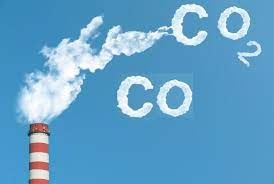The Pollution may be controlled by the following two ways.
1. The formation of Pollutants is prevented as far as possible.
2. The pollutants are destroyed after they are formed.
Control Of Hydrocarbons :
Formation Of Hydrocarbon may be reduced by the following methods,
1. Reducing the compression ratio.
2. Changing the design of Combustion Chamber.
3. Changing The design of piston.
4. By supplying lean mixture.
5. By maintenance of piston and piston ring
Destroying the Hydrocarbons can be done by following Methods,
1. By supplying air to the inlet manifold.
2. By using after burner.
3. By using catalytic converter.
Control Of CO :
Methods of reducing CO are,
1. By using closed loop control.
2. By supplying lean mixture.
3. Providing suitable overlap of valves.
Methods of destroying CO are :
1. By using reactor in exhaust manifold.
2. By using after burner.
3. By using catalytic converter.
Control of Oxides Of Nitrogen :
Methods of reducing oxides of nitrogen are as follows :
1. By supplying the exhaust gain to the inlet manifold.
2. By spraying water in the inlet manifold to add moisture to mixture.
3. By using catalytic converter in the exhaust, the oxides of nitrogen can be destroyed.
Control of Smoke and Smog :
1. Running the engine, with a limited load.
2. Maintaining the engine wall.
3. By adding barium salt in the fuel.
4. By using catalytic muffler.
Odor Control :
1. By using Catalytic Converter.
2. By changing the injection system in diesel engine.





Comments
Post a Comment